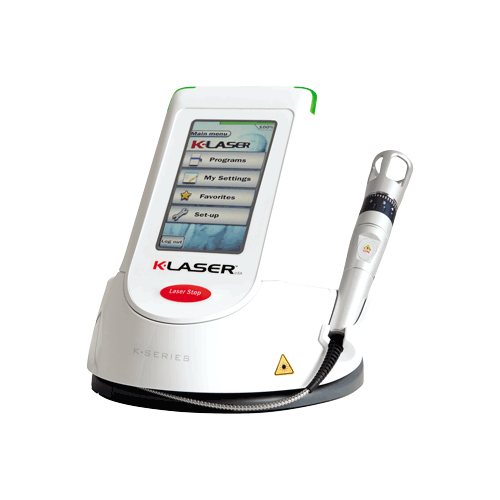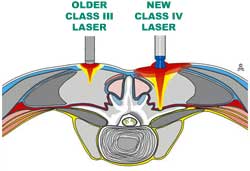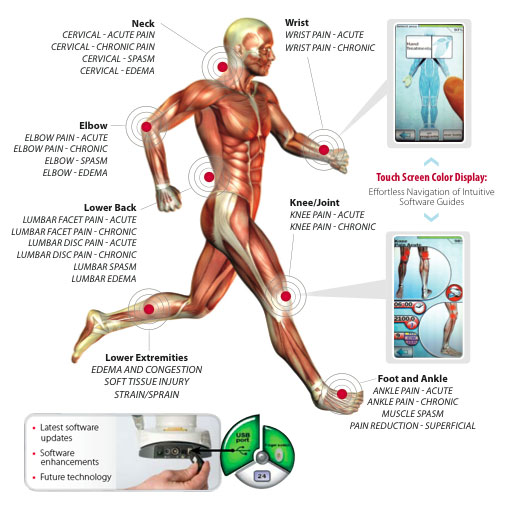What is the K laser?
The K Laser is an FDA approved Class IV laser. Early Class III therapeutic lasers are effective, but literally thousands of times less powerful than the new technology available today. Class III lasers are capable of penetration of only a few millimeters, while Class IV lasers can penetrate over 4 inches into the deep musculoskeletal tissue.
The new lasers have been researched in European countries for several years, and it has been discovered that specific wattage and modulation are now used for specific conditions, never before available until now. The perfect blend of chiropractic and laser therapy produces phenomenal results in extremely short periods of time.
The number of treatments required depends on the nature of the problem and the length of time the patient has been affected by it. Some problems are resolved with as little as one treatment. Chronic and/or deep-seated conditions may take as many as 10 treatments but most patients find relief much sooner.There are no known side effects from laser therapy. Though laser therapy is contraindicated for patients taking light sensitive drugs, use in areas injected by steroids within 7 days, and is not to be used over the Thyroid gland or in the eye.The laser works by creating vasodilatation, bringing in oxygen to the cells. It stimulates the lymphatic system, pulling edema and inflammation from the area. ATP (Adenosine triphosphate) production is stimulated in the cells helping them have the energy to function normally. The pain reflex is broken, offering immediate relief of pain. In other words, “it brings in the good stuff and gets rid of the bad stuff”
What is laser or light therapy?
The word “LASER” is an acronym for Light Amplification by Stimulated Emission of Radiation. Laser Therapy or “photobiomodulation”, is the use of specific wavelengths of light (red and near infrared) to create therapeutic effects. These effects include improved healing time, pain reduction, increased circulation and decreased swelling.

What is its history?
Credit for the development of laser theory is generally given to Albert Einstein. In his theory “Zur Quantum Theories der Strahlung“, published in 1916, he first used the name stimulated emission.The effects of red light on cellular function have been known since 1880 however the clinical benefits were only discovered by accident during laser safety tests in 1967. In 1967, a few years after the first working laser was invented, Endre Mester in Semmelweis University Budapest, Hungary wanted to find out if laser light could cause cancer. He took some mice, shaved the hair off their backs, divided them into two groups and gave a laser treatment with a low-powered ruby laser to one group.They did not get cancer and to his surprise the shaved hair grew back more quickly on the treated group than the untreated group. That was how “laser biostimulation” was discovered.The first low-power lasers suitable for treating pain became available commercially in the late 1970’s and ever since then, laser therapy has been widely utilized in Europe by physical therapists, nurses and doctors. Now, after FDA approval laser therapy is quickly gaining popularity in the USA.
Conditions Treated
Benefits of Laser Therapy

Has effectiveness been demonstrated scientifically?
Yes. There are thousands of published studies demonstrating the clinical effectiveness of laser therapy. Among these, there are more than one hundred rigorously controlled, scientific studies that document the effectiveness of laser for many clinical conditions.




